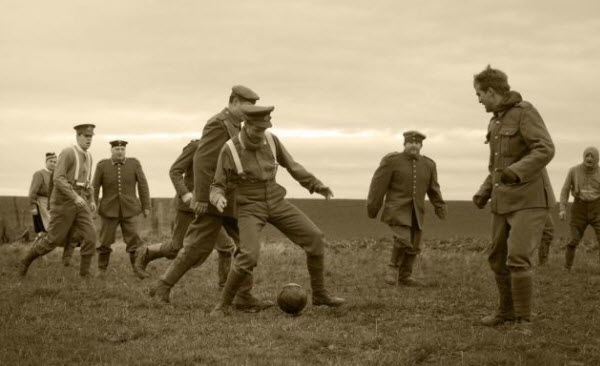Without a doubt, soccer is the most popular sport in many countries around the world, played and followed by millions. However, in some nations, other sports take precedence. For example, in India, cricket is favored due to historical reasons—soccer was introduced by the British Empire, which led to a preference for other sports. In the United States, baseball and American football dominate, with soccer, known as “football” there, taking a backseat. Despite having a long history in the U.S., soccer was relatively neglected until the 1994 World Cup, which marked a significant turning point in American awareness and participation in the sport. This article explores the history of soccer in the U.S. and its potential to surpass other American sports in the coming years.
The concept of soccer, then known as “football,” was introduced to American society in 1905 when President Theodore Roosevelt suggested that people should not only engage in American football. This was during a tour of the U.S. by an English soccer team showcasing the sport to Americans. The following year, the Washington Post published an article titled “If This Isn’t Football, What Is?” arguing that the American term “soccer” could not replace the traditional football, as it was a “kicking game” unlike the American version. Despite this, soccer experienced some growth, particularly in St. Louis, where amateur clubs began forming. However, it remained a niche sport outside the city.

About a decade later, the U.S. sent many of its able-bodied citizens to war-torn regions where soccer, or “football,” was popular. This led to a theory that American soldiers would become enamored with the game and spread it upon their return. In 1918, the Detroit Free Press reported that the U.S. government purchased and shipped many soccer balls to military camps, trying to promote the sport among soldiers. The newspaper questioned why the military was so interested in the sport and speculated that its low cost and simplicity made it appealing, providing soldiers with good physical exercise.

After the war, soccer largely disappeared from American consciousness until 1950, when the U.S. achieved a significant international victory by defeating England 1-0 in the World Cup. In 1955, soccer resurfaced in military circles, as the U.S. Army supported the sport to foster international relations. Instead of imposing their culture, soldiers were encouraged to learn about the cultures of the countries they were stationed in, including playing soccer. This strategy was popular among European Air Force bases during the Cold War. Lieutenant Al Aspin Jr., a famous European Air Force soccer coach, predicted that within ten years, the U.S. would become a soccer powerhouse. However, this prediction proved inaccurate as the U.S. failed to qualify for the 1966 World Cup.

The next era of soccer, or “soccer,” threatened to dominate American lifestyle in 1968, thanks to Phil Woosnam, Commissioner of the North American Soccer League. He predicted that Americans would soon embrace “Soccer Lord” and made some bold predictions, later proven wrong, such as the U.S. competing for the World Cup in 1990 (the U.S. finished last in their group, losing all three matches) and the NASL becoming as popular as the NFL by 1985 (the league folded in 1984). Woosnam also predicted that American fans would one day exhibit the same enthusiasm for soccer as fans in Brazil and England. In 1981, the Boston Globe published an article about the popularity of youth soccer in New England, featuring an interview with soccer expert Peter Giannakopoulos, who claimed American kids were better at soccer than their European counterparts.

As the U.S. prepared to host the World Cup in 1994, Anthony Day of the Los Angeles Times expressed skepticism about whether American audiences could be drawn to soccer, arguing that Americans prefer sports with statistical analyses of running, hitting, and pitching. He doubted that Americans would embrace a sport that rendered wrist calculators useless. Despite this, soccer was touted for its rich array of styles and tactical concepts. With the World Cup underway, American interest in the sport began to rise, despite some skepticism from the press. Phil Hirsch, a columnist for the Chicago Tribune, sarcastically noted that according to reliable sources, more than 230 million Americans admitted that soccer is round. The New York Times reported that soccer was still not a major passion in the U.S., with one journalist claiming that the sport only interested mothers and children, who abandoned it for other sports as they grew up. Fortunately, with the rise of the internet, American interest in soccer has increased, allowing fans to follow tournaments and matches more easily and stay informed about the sport.
